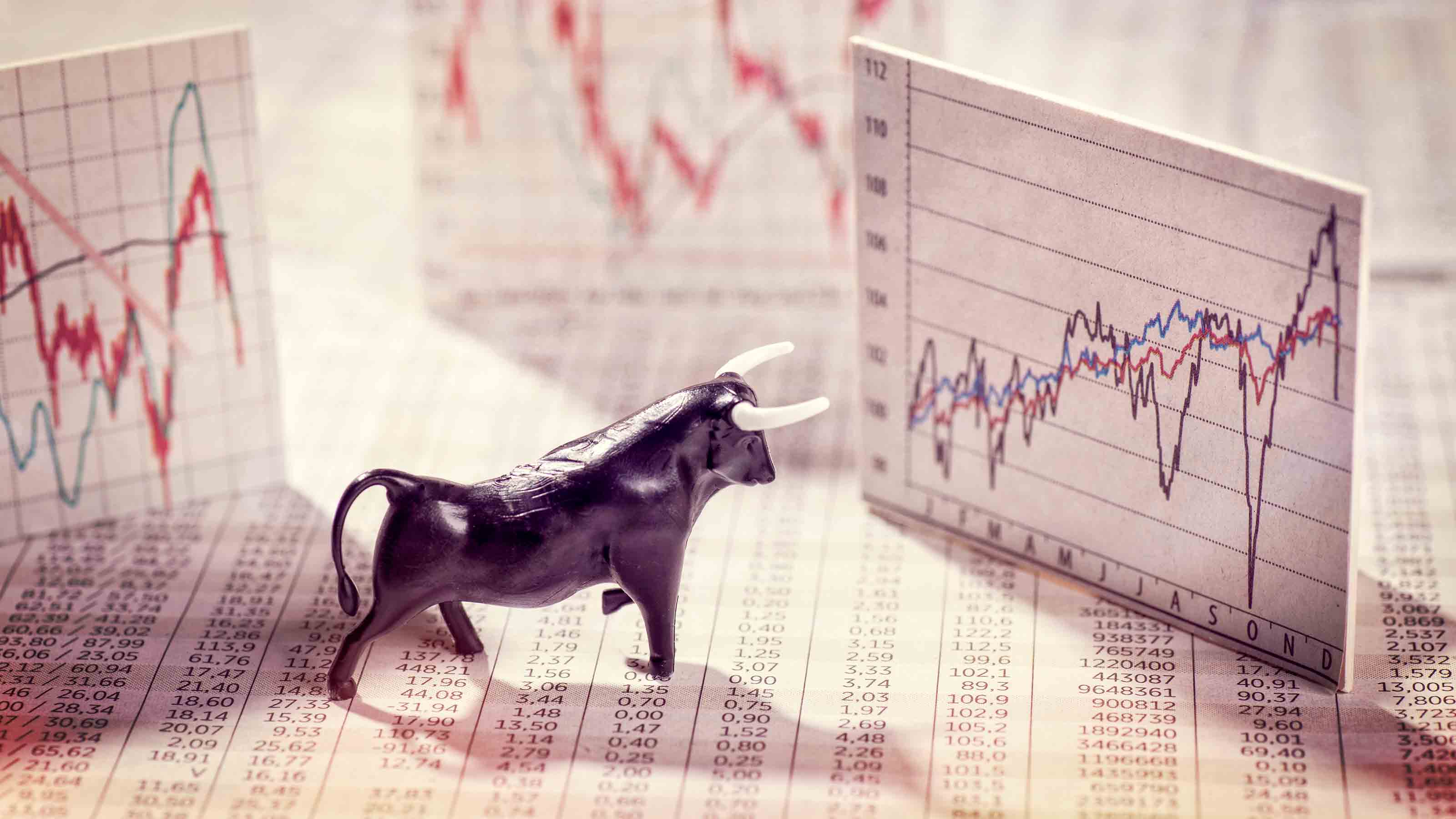Like the ETF? Check Out the Cheaper Clone
Name-brand ETFs are offering lower-cost, higher-returning versions of their famous funds. For long-term investors, they might be a better deal.

There may be comfort in stocking your portfolio with large and well-known exchange-traded funds such as the nation's biggest ETF, the SPDR S&P 500 ETF Trust (SPY), or the soaring Invesco QQQ Trust (QQQ), which tracks the 100 largest non-financial stocks traded on Nasdaq. But you may not realize that you could be paying a little extra for such comfort – or that you have another choice.
Several name-brand ETFs offer lower-cost, higher-returning clones, nicknamed "mini-mes." Although informally named after the small sidekick of Dr. Evil in the Austin Powers movies, mini-me funds are heroes for investors, says Dan Sotiroff, a senior analyst for investment research firm Morningstar.
They have some drawbacks. For example, because they are newer and less liquid than their bigger siblings, there are fewer options contracts linked to them. And they trade less efficiently, carrying slightly wider spreads between the prices a buyer is willing to pay and a seller is willing to accept. But for long-term investors, "the mini is a better deal," says Sotiroff. Or, as Austin Powers would say: "Yeah, baby!"

Sign up for Kiplinger’s Free E-Newsletters
Profit and prosper with the best of expert advice on investing, taxes, retirement, personal finance and more - straight to your e-mail.
Profit and prosper with the best of expert advice - straight to your e-mail.
Cheaper versions of famous funds
Of course, many ETFs are index funds that attempt to replicate benchmarks such as the S&P 500. However, a true mini-me fund is an exact clone of a larger, well-established fund. A mini-me is managed by the same firm and holds the same portfolio but charges lower expenses and typically trades at lower prices.
Why are firms such as State Street, Invesco and BlackRock creating cheaper versions of their famous funds? They are trying to prevent their customers from switching to lower-cost competitors, explains Aniket Ullal, head of ETF data and analytics at CFRA Research. "The logic is that cannibalizing one's own product is preferable to losing share to a competitor," he says.
In addition, most of the mini-mes launched so far offer some additional profit opportunities for their fund sponsors. The mini-mes tend to be updated versions of older funds that were created before the Securities and Exchange Commission modernized rules for ETFs. Those original funds are technically trusts and have higher costs because they are legally barred from immediately reinvesting dividends received from stock investments, for example, or making money by lending securities.
See the table below (correct as of August 31, 2024) to compare five mini-me ETFs with their larger, original versions. Clones are highlighted in bold and located directly above the originals. N/A denotes the fund was not in existence over the entire period.
| Fund name | Symbol | Price | Expense ratio | One-year total return |
|---|---|---|---|---|
| SPDR Portfolio S&P 500 | SPLG | $64 | 0.02% | 27.1% |
| SPDR S&P 500 | SPY | $540 | 0.09% | 27.0% |
| Invesco NASDAQ 100 | QQQM | $187 | 0.15% | 27.1% |
| Invesco QQQ Trust | QQQ | $455 | 0.20% | 27.0% |
| SPDR Gold MiniShares | GLDM | $50 | 0.10% | 29.3% |
| SPDR Gold Shares | GLD | $231 | 0.40% | 28.9% |
| Grayscale Bitcoin Mini Trust | BTC | $5 | 0.15% | N/A |
| Grayscale Bitcoin Trust | GBTC | $46 | 1.50% | 98.7% |
| iShares Gold Trust Micro | IAUM | $25 | 0.09% | 29.3% |
| iShares Gold Trust | IAU | $47 | 0.25% | 29.1% |
Note: This item first appeared in Kiplinger Personal Finance Magazine, a monthly, trustworthy source of advice and guidance. Subscribe to help you make more money and keep more of the money you make here.
Related content
Profit and prosper with the best of Kiplinger's advice on investing, taxes, retirement, personal finance and much more. Delivered daily. Enter your email in the box and click Sign Me Up.

Kim Clark is a veteran financial journalist who has worked at Fortune, U.S News & World Report and Money magazines. She was part of a team that won a Gerald Loeb award for coverage of elder finances, and she won the Education Writers Association's top magazine investigative prize for exposing insurance agents who used false claims about college financial aid to sell policies. As a Kiplinger Fellow at Ohio State University, she studied delivery of digital news and information. Most recently, she worked as a deputy director of the Education Writers Association, leading the training of higher education journalists around the country. She is also a prize-winning gardener, and in her spare time, picks up litter.
-
 New Trump Incentive Could Help Donors Avoid Capital Gains Tax
New Trump Incentive Could Help Donors Avoid Capital Gains TaxTax Policy As U.S. Senate Republicans mark up their version of the One Big Beautiful Bill Act, one provision could give some donors a major tax break.
-
 2025 SALT Cap Could Hurt Top 'Hidden Home Cost'
2025 SALT Cap Could Hurt Top 'Hidden Home Cost'Tax Deductions The latest GOP tax bill might make hidden homeowner costs worse for you. Here’s how.
-
 The Bull Case for the Second Half of 2025
The Bull Case for the Second Half of 2025This strategist sees a volatile market segueing to a strong close this year.
-
 7 Essential Investing Rules We All Should Know
7 Essential Investing Rules We All Should KnowThe best time to start investing is right now. That's just one vital rule investors should be familiar with. Here are six more.
-
 These Are the Key Tariff Issues to Watch in Coming Months
These Are the Key Tariff Issues to Watch in Coming MonthsWhile they're not dominating headlines right now, tariffs are not over. Some key dates are coming up fast that could upend markets all over again.
-
 Technology Unleashes the Power of Year-Round Tax-Loss Harvesting
Technology Unleashes the Power of Year-Round Tax-Loss HarvestingTech advancements have made it possible to continuously monitor and rebalance portfolios, allowing for harvesting losses throughout the year rather than just once a year.
-
 The Fiduciary Firewall: An Expert's Five-Step Guide to Honest Financial Planning
The Fiduciary Firewall: An Expert's Five-Step Guide to Honest Financial PlanningArmed with education and awareness, you can avoid unethical people in the financial industry by seeking fee-only fiduciaries and sharing your knowledge with others.
-
 Stock Market Today: Stocks Struggle to Sustain Gains
Stock Market Today: Stocks Struggle to Sustain GainsMixed messages from multiple sources continue to make for a messy market for investors, traders and speculators.
-
 What to Do and What Not to Do When Markets Get Turbulent
What to Do and What Not to Do When Markets Get TurbulentFollow these tips and strategies to help you navigate investing turbulence.
-
 What to Know About Treasury Inflation-Protected Securities (TIPS)
What to Know About Treasury Inflation-Protected Securities (TIPS)Understanding what Treasury Inflation-Protected Securities (TIPS) are and how to use them in a portfolio.
